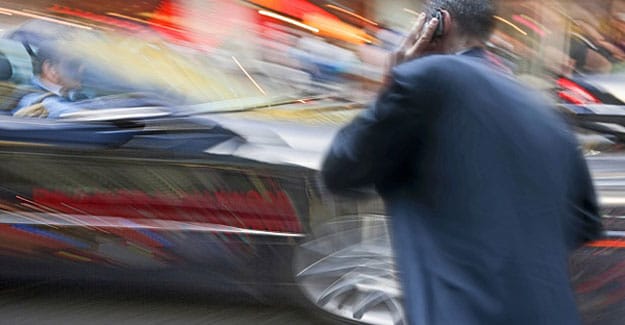“I absorb electrical energy directly and utilize it with an almost one hundred percent efficiency. I am composed of strong metal, am continuously conscious, and can stand extremes of environment easily.” ―Isaac Asimov, I, Robot
I’m not into technology. No, really. I’m not. That’s why I’m so surprised it’s taken over my life and swallowed me whole ― no futuristic cyborg movie necessary. Just try to come between me and my Blackberry.
The minute my alarm goes off in the morning, I roll over and scroll my Twitter feed. Then I start texting. Then I get to the office and stare at a monitor all day, churning out emails, creating content and managing my social media communities.
Ok, there are face-to-face meetings sandwiched in between screens (just to plan what to do when we get back to our screens). Even so, we are always plugged in, on the grid, accessible, phones vibrating silently in our laps under the boardroom table. I can rationalize it by saying I work in PR, but my teenage son is even more plugged in than I am, and he works stocking shelves (conditioning, it’s called in the grocery biz).
That’s another way I justify clutching my phone at all times. My son might need to reach me. Or my elderly parents. Or my cat, who, incidentally has his own Twitter feed (@ohmkitty). It would be irresponsible to unplug. I’d be shirking my familial duties, right? Smartphone users reach for their mobile devices 150 times each day, according to Mary Beeker’s latest Internet Trends report.
New figures from CNET UK say we spend 23 days a year on our phones, sending texts, using apps and making calls. Over the course of the average person’s life, that’s 1,414 days or 3.9 years poking, prodding and squinting at tiny screens. Of course, no one really talks on the phone anymore. Surfing the Internet and texting are more popular than making actual phone calls. Heck, I rarely call my own kid. He doesn’t return calls, and he only answers texts ― even when he’s in the next room making Vines and playing Candy Crush Saga on his iPhone.
More than 4 out of 10 Americans now own a tablet, a 14 percent increase since last year. Overall smartphone ownership increased from 46 percent last year to 61 percent this year. Mobile saturation is nearly 80 percent among 18- to 34-year-olds. So, depending on your Internet service provider (mine is uber-janky), we have the potential for uninterrupted digital mobility.
Researchers at the National Institute on Drug Abuse have compared our state of technological dependency to that of drugs and alcohol. Neuroscientists have found a dopamine-induced link to compulsive texting. Uberfacts has coined the term “textiety” to describe that anxious feeling you get after not receiving or sending any text messages. Social media has just overtaken pornography as the #1 activity on the Web. It’s the dark side of hyper-connectivity and over-stimulation.
I’m not suggesting we do a global battery pull in a defiant act of technophobia. However, it might be beneficial to unplug occasionally, just to detox from the over-stimulation. That’s why I’m turning on Airplane Mode. Who’s with me?
Detox From Over-Stimulation & Turn On Airplane Mode
Image Credits: [crave.cnet.co.uk] [123rf.com]

COMMENTS